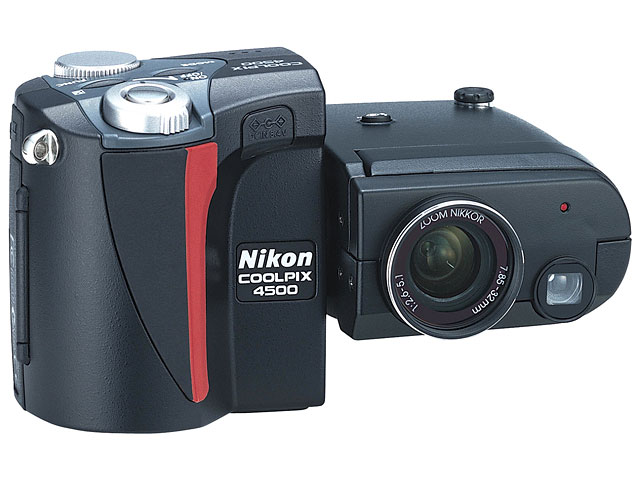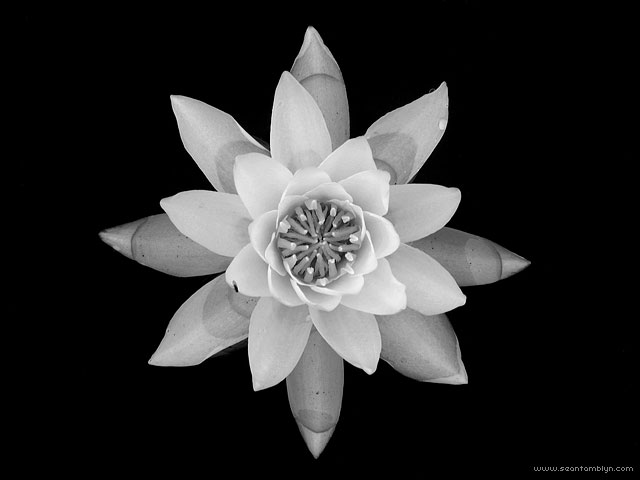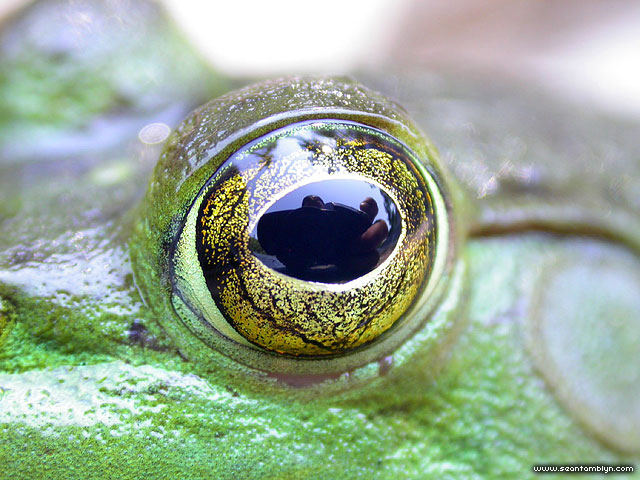An Open Letter To Nikon
Bring Back The Swivel-body Coolpix Series

Once upon a time, the Coolpix name was synonymous with digital photography. Nikon absolutely owned the market, producing a line of cameras that set about defining a new digital heritage, embracing the possibilities of all-new technologies. The most obvious design element was a unique split swivel-body that allowed half of the entire camera to rotate 180°. No longer did the photographer need to be directly in line with the lens, the lens could now point any which way, and the interface elements and view screen would stay in line with the photographer. Suddenly you could look down and shoot up, or shoot straight ahead while holding the camera over your head in a crowd. Revolutionary.
Modern cameras, point-and-shoots and SLRs alike, now often have an articulating screen. A useful feature, absolutely, but one that falls short of what cameras were doing back in 2002. While the new screens move, the camera controls stay in line with the camera lens, rendering camera operation difficult when shooting around extreme angles. Consider these images:

 At left is a flowering water lily, floating in the dark waters off of Georgian Bay’s Franklin Island. In the middle of a small bay, the flower is traditionally inaccessible. But with a Nikon Coolpix 4500, I was able to kayak to the flower, lean over slightly, and shoot straight down while framing and maintaining full control of the camera. Impossible to do with a traditional SLR. At right is a garter snake in early spring, fresh from its winter slumber. Getting underneath a snake is hard to do, but with the Coolpix on the ground, the lens can rotate and shoot up. Or at least they could, this feature has unfortunately been relegated to history.
At left is a flowering water lily, floating in the dark waters off of Georgian Bay’s Franklin Island. In the middle of a small bay, the flower is traditionally inaccessible. But with a Nikon Coolpix 4500, I was able to kayak to the flower, lean over slightly, and shoot straight down while framing and maintaining full control of the camera. Impossible to do with a traditional SLR. At right is a garter snake in early spring, fresh from its winter slumber. Getting underneath a snake is hard to do, but with the Coolpix on the ground, the lens can rotate and shoot up. Or at least they could, this feature has unfortunately been relegated to history.
Professional features in a portable form factor
The images above showcase the swivel-body, in combination with other professional-grade features that set the Coolpix line apart, in particular black-and-white shooting and macro capabilities. Shooting ‘natively’ in black-and-white, high-ISO Coolpix photographs would produce a lovely film-like grain. In macro mode, the close-focusing distance of the lens was nothing short of excellent, making the Coolpix 4500 a must-have secondary camera for many years after the end of its production. There were many features that set the Coolpix line apart:
• Magnesium-alloy bodies
• 28mm threaded lens, for filters and optional lenses without the need for adapters
• DC-power input, so the camera could be powered externally
• Sync port to trigger off-camera strobes
• Fully controllable serial protocols, allowing relatively simple external control of the camera
• A wide range of interesting lenses, from telephoto to full-frame fisheye
• Optical adapters, for attachments to telescopes and microscopes
• Hot mirror replacements, for full ultraviolet and near-infrared sensitivity





Above, clockwise from top: 360° twilight panorama using the WC-E63 wideangle converter, a bullfrog’s eye reflects the distinctive shape of the Nikon Coolpix 4500, Toronto Island’s Snug Harbour in near-infrared, a morel mushroom lit by off-camera strobes, and a praying mantis near Parry Sound, Ontario.
Long in the tooth
Of course, these cameras are now long in the tooth, and obsolete by today’s standards. The Coolpix 4500 topped out at 4-megapixels, the screens are tiny, the cameras are power hogs, and the high-iso performance has been completely eclipsed by modern sensors. A later Coolpix, the 8700, attempted to incorporate an articulating screen in an SLR-like body with an electronic viewfinder. But it wasn’t as useful as the swivel-body, and noise above ISO 200 was intolerable. Close, but no cigar.
What’s needed is a modern update to the classic that put Nikon on the digital camera map, an update of the venerable Coolpix 4500 with some modern features:
• Updated APS-C CCD or CMOS sensor
• VR/IS (Vibration Reduction or Image Stabilization)
• PC port for external strobes
• Updated lens with modern coatings
• SWM/USM focusing (Silent Wave Motor or Ultrasonic Motor)
• 12-volt DC power input
• Reduced power draw
• Larger screen
Nothing on that list is outrageous, many modern point-and-shoot cameras incorporate a lot of these features. But all lack the swivel-body design that set the early Coolpixes apart, a feature that hasn’t been implemented properly for years. The Coolpix S4 tried to incorporate a swivel-body, but it lost important features like the 28mm lens threads, excellent macro, and build materials. Professional shooters aren’t going to give up their SLRs, but many would be thrilled to have a modern-day Coolpix 4500 in their pocket to augment their primary systems. I would, and I’m now primarily a Canon shooter. They were that good.
 Above: a panoramic self-portrait kayaking in the ice during spring breakup in Toronto, using a Coolpix 4500 with WC-E63 wideangle converter and custom-built nodal adjustment plate.
Above: a panoramic self-portrait kayaking in the ice during spring breakup in Toronto, using a Coolpix 4500 with WC-E63 wideangle converter and custom-built nodal adjustment plate.
The once and future king
The point-and-shoot battle for professional hearts and minds is currently being played out between Nikon’s P-series and Canon’s G-series. Both camera series are imminently capable, and completely overshadow early digital cameras in almost all areas, save one. Nikon could again reign supreme with a proper update to the line that once made them king of the point-and-shoot market, reincorporating the swivel-body design that set them apart from all contenders.


Leave a Reply